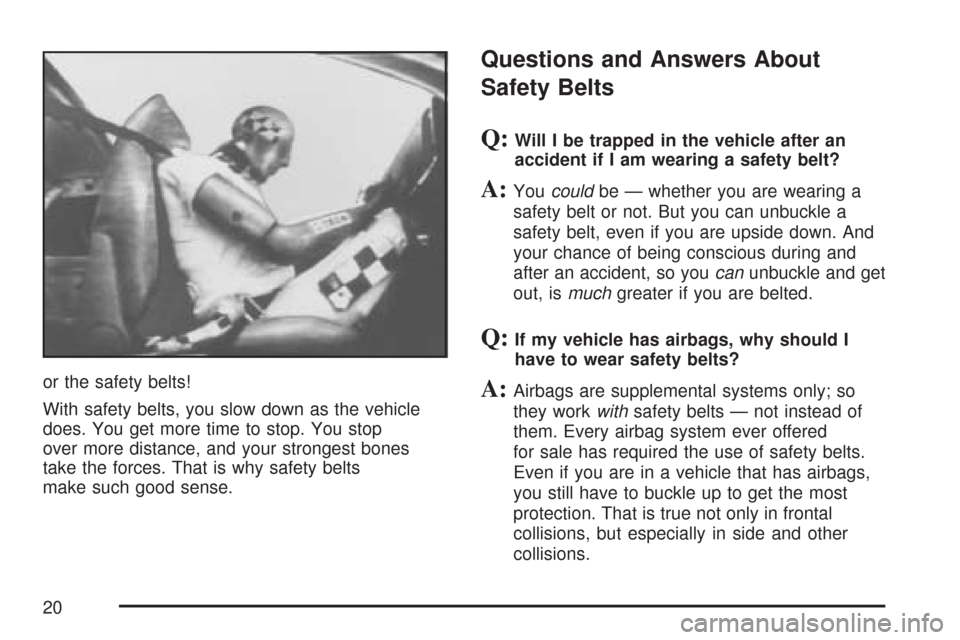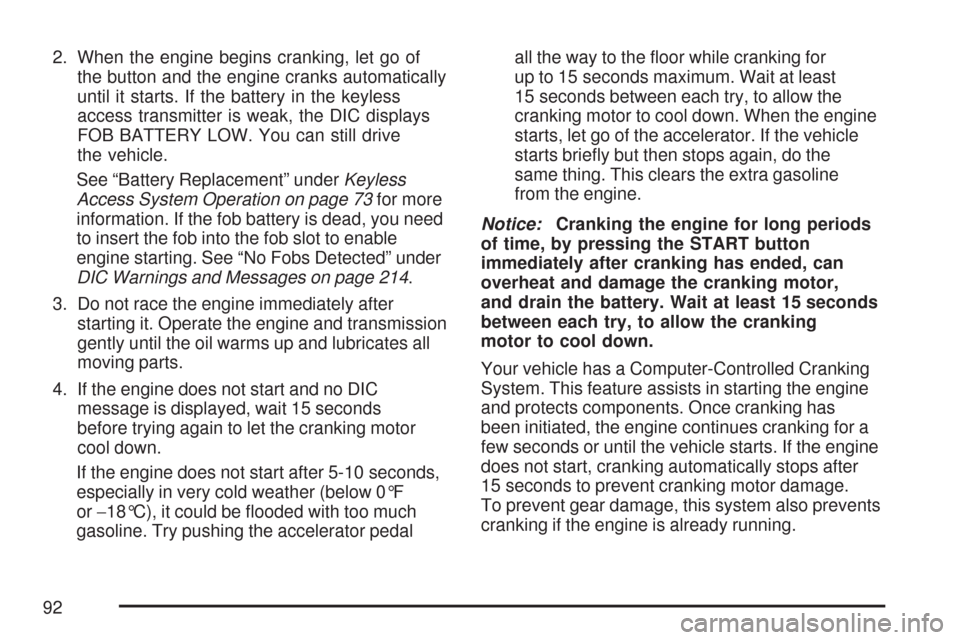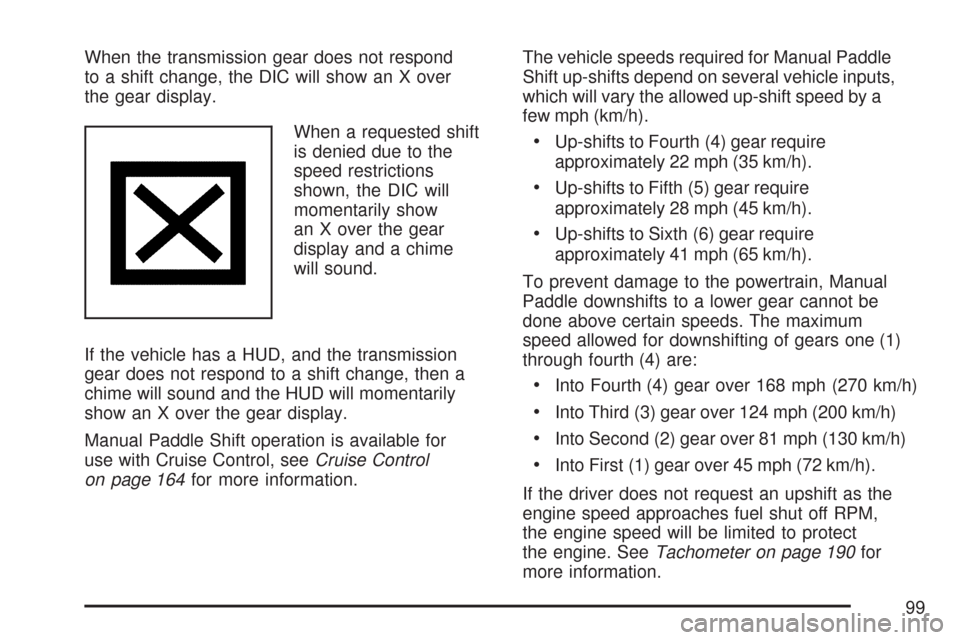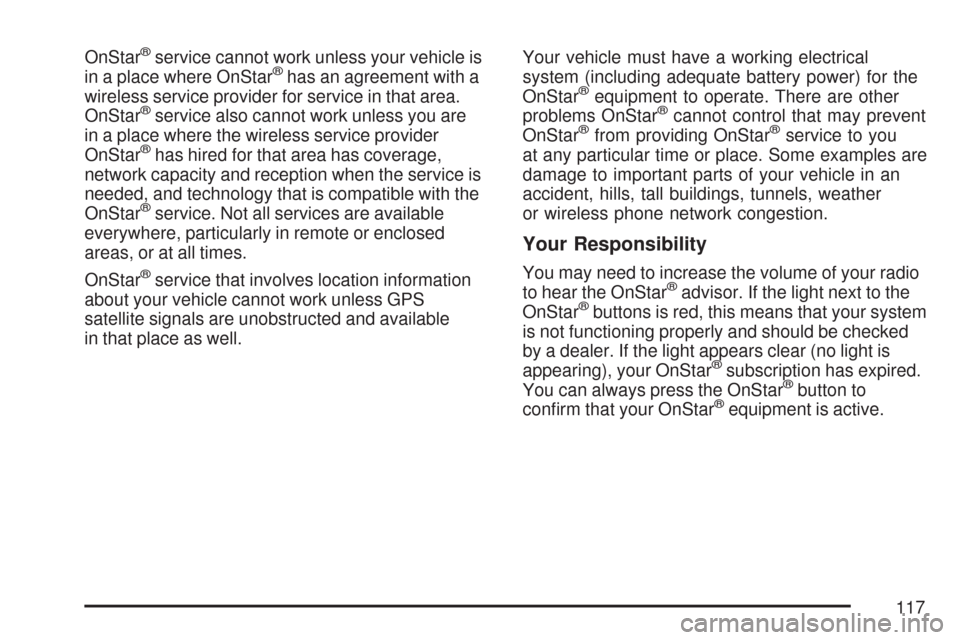Page 10 of 488
Heated Seats
If your vehicle has
heated seats, the
buttons are located on
the center console.
Each seat has two settings: high and low.
To turn on the heated seats, press the top button
once. The seat will heat to the high setting.
Press the top button again to switch to the low
setting. The lights on the top button will indicate
which setting it is in. Press the bottom button
to turn the system off.
The heated seats can only be used when the
ignition is on. When the vehicle is off, the heated
seats will turn off.
Memory Seat, Mirrors and
Steering Wheel
If your vehicle has this feature, memory can
program and recall the settings for the driver’s
seating position. The controls for this feature are
located on the driver’s door.
The numbers on the back of the keyless access
transmitters, 1 and 2, correspond to the numbers
on the memory buttons.
10
Page 20 of 488

or the safety belts!
With safety belts, you slow down as the vehicle
does. You get more time to stop. You stop
over more distance, and your strongest bones
take the forces. That is why safety belts
make such good sense.
Questions and Answers About
Safety Belts
Q:Will I be trapped in the vehicle after an
accident if I am wearing a safety belt?
A:Youcouldbe — whether you are wearing a
safety belt or not. But you can unbuckle a
safety belt, even if you are upside down. And
your chance of being conscious during and
after an accident, so youcanunbuckle and get
out, ismuchgreater if you are belted.
Q:If my vehicle has airbags, why should I
have to wear safety belts?
A:Airbags are supplemental systems only; so
they workwithsafety belts — not instead of
them. Every airbag system ever offered
for sale has required the use of safety belts.
Even if you are in a vehicle that has airbags,
you still have to buckle up to get the most
protection. That is true not only in frontal
collisions, but especially in side and other
collisions.
20
Page 78 of 488
Doors and Locks
Door Locks
{CAUTION:
Unlocked doors can be dangerous.
Passengers — especially
children — can easily open the doors
and fall out of a moving vehicle. When
a door is locked it will not open. You
increase the chance of being thrown
out of the vehicle in a crash if the doors
are not locked. So, wear safety belts
properly and lock the doors whenever
you drive.
CAUTION: (Continued)
CAUTION: (Continued)
Young children who get into unlocked
vehicles may be unable to get out.
A child can be overcome by extreme
heat and can suffer permanent injuries
or even death from heat stroke.
Always lock your vehicle whenever
you leave it.
Outsiders can easily enter through an
unlocked door when you slow down
or stop your vehicle. Locking your
doors can help prevent this from
happening.
There are several ways to lock and unlock your
vehicle.
From the outside, press the lock or unlock button
on the keyless access transmitter.
78
Page 85 of 488
There is a glow-in-the-dark emergency trunk
release handle located on the rear wall of the trunk
below the latch. This handle will glow following
exposure to light. Pull the release handle down
to open the trunk from the inside.
Windows
{CAUTION:
Leaving children, helpless adults, or pets
in a vehicle with the windows closed is
dangerous. They can be overcome by
the extreme heat and suffer permanent
injuries or even death from heat stroke.
Never leave a child, a helpless adult, or a
pet alone in a vehicle, especially with the
windows closed in warm or hot weather.
85
Page 87 of 488
Sun Visors
To block out glare, you can swing down the
visors. You can also swing them to the side.
Lighted Visor Vanity Mirrors
Pull down the sun visor and lift the cover to
expose the lighted vanity mirror. When the cover
is lifted, the lamps will come on automatically,
even if the ignition is off.
Theft-Deterrent Systems
Vehicle theft is big business, especially in some
cities. Although your vehicle has a number of
theft-deterrent features, we know that nothing
we put on it can make it impossible to steal.
Theft-Deterrent System
Your vehicle is equipped with a theft-deterrent
alarm system.
With this system, the
security light will �ash
when the door is
open and locked with
the power door
lock switch.
If this light is on continuously while the engine is
running, your vehicle needs service.
87
Page 92 of 488

2. When the engine begins cranking, let go of
the button and the engine cranks automatically
until it starts. If the battery in the keyless
access transmitter is weak, the DIC displays
FOB BATTERY LOW. You can still drive
the vehicle.
See “Battery Replacement” underKeyless
Access System Operation on page 73for more
information. If the fob battery is dead, you need
to insert the fob into the fob slot to enable
engine starting. See “No Fobs Detected” under
DIC Warnings and Messages on page 214.
3. Do not race the engine immediately after
starting it. Operate the engine and transmission
gently until the oil warms up and lubricates all
moving parts.
4. If the engine does not start and no DIC
message is displayed, wait 15 seconds
before trying again to let the cranking motor
cool down.
If the engine does not start after 5-10 seconds,
especially in very cold weather (below 0°F
or−18°C), it could be �ooded with too much
gasoline. Try pushing the accelerator pedalall the way to the �oor while cranking for
up to 15 seconds maximum. Wait at least
15 seconds between each try, to allow the
cranking motor to cool down. When the engine
starts, let go of the accelerator. If the vehicle
starts brie�y but then stops again, do the
same thing. This clears the extra gasoline
from the engine.
Notice:Cranking the engine for long periods
of time, by pressing the START button
immediately after cranking has ended, can
overheat and damage the cranking motor,
and drain the battery. Wait at least 15 seconds
between each try, to allow the cranking
motor to cool down.
Your vehicle has a Computer-Controlled Cranking
System. This feature assists in starting the engine
and protects components. Once cranking has
been initiated, the engine continues cranking for a
few seconds or until the vehicle starts. If the engine
does not start, cranking automatically stops after
15 seconds to prevent cranking motor damage.
To prevent gear damage, this system also prevents
cranking if the engine is already running.
92
Page 99 of 488

When the transmission gear does not respond
to a shift change, the DIC will show an X over
the gear display.
When a requested shift
is denied due to the
speed restrictions
shown, the DIC will
momentarily show
an X over the gear
display and a chime
will sound.
If the vehicle has a HUD, and the transmission
gear does not respond to a shift change, then a
chime will sound and the HUD will momentarily
show an X over the gear display.
Manual Paddle Shift operation is available for
use with Cruise Control, seeCruise Control
on page 164for more information.The vehicle speeds required for Manual Paddle
Shift up-shifts depend on several vehicle inputs,
which will vary the allowed up-shift speed by a
few mph (km/h).
Up-shifts to Fourth (4) gear require
approximately 22 mph (35 km/h).
Up-shifts to Fifth (5) gear require
approximately 28 mph (45 km/h).
Up-shifts to Sixth (6) gear require
approximately 41 mph (65 km/h).
To prevent damage to the powertrain, Manual
Paddle downshifts to a lower gear cannot be
done above certain speeds. The maximum
speed allowed for downshifting of gears one (1)
through fourth (4) are:
Into Fourth (4) gear over 168 mph (270 km/h)
Into Third (3) gear over 124 mph (200 km/h)
Into Second (2) gear over 81 mph (130 km/h)
Into First (1) gear over 45 mph (72 km/h).
If the driver does not request an upshift as the
engine speed approaches fuel shut off RPM,
the engine speed will be limited to protect
the engine. SeeTachometer on page 190for
more information.
99
Page 117 of 488

OnStar®service cannot work unless your vehicle is
in a place where OnStar®has an agreement with a
wireless service provider for service in that area.
OnStar
®service also cannot work unless you are
in a place where the wireless service provider
OnStar
®has hired for that area has coverage,
network capacity and reception when the service is
needed, and technology that is compatible with the
OnStar
®service. Not all services are available
everywhere, particularly in remote or enclosed
areas, or at all times.
OnStar
®service that involves location information
about your vehicle cannot work unless GPS
satellite signals are unobstructed and available
in that place as well.Your vehicle must have a working electrical
system (including adequate battery power) for the
OnStar
®equipment to operate. There are other
problems OnStar®cannot control that may prevent
OnStar®from providing OnStar®service to you
at any particular time or place. Some examples are
damage to important parts of your vehicle in an
accident, hills, tall buildings, tunnels, weather
or wireless phone network congestion.
Your Responsibility
You may need to increase the volume of your radio
to hear the OnStar®advisor. If the light next to the
OnStar®buttons is red, this means that your system
is not functioning properly and should be checked
by a dealer. If the light appears clear (no light is
appearing), your OnStar
®subscription has expired.
You can always press the OnStar®button to
con�rm that your OnStar®equipment is active.
117